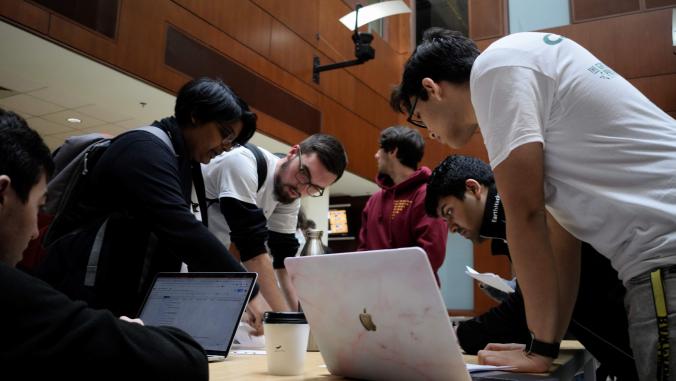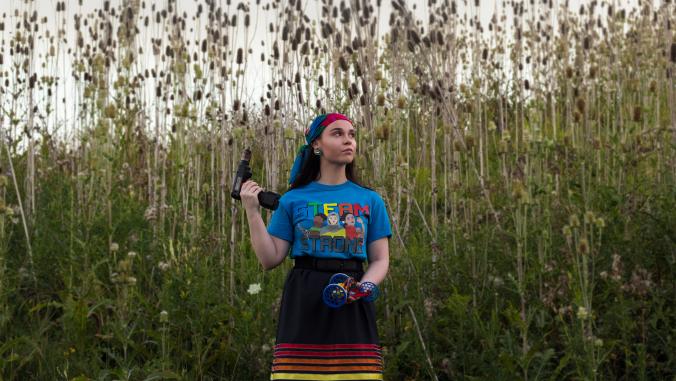More companies face climate-related risks to supply chains
<p>How does your company understand climate-related disruptions? New tactics and tools surfaced at the Climate Leadership Conference.</p>

Image by Gordo25 via Shutterstock
It's easy to talk about companies needing to understand climate risks in their supply chains. It's a lot harder to do something about it.
Risk and supply chains were woven tightly throughout the conversation at the Climate Leadership Conference last week in San Diego. It brought together leaders across public and private sectors — from business to government to utilities — to explore the latest science, projections and opportunities presented by increasing climatological changes.
This is hardly the only recent event to cover this ground. The 2014 World Economic Forum called climate change an "economically disruptive force," and climate-related risks are rising on the agenda of global companies in the past years — for good reason. In Davos last month, Jim Yong Kim, president of the World Bank, called on corporate leaders to take action: "Be the first mover. Use smart due diligence. ... It's simple self-interest. Every company, investor, and bank that screens new and existing investment for climate risk is simply being pragmatic."
Back in San Diego, Joyce Coffee, executive director of the Notre Dame Global Adaptation Institute, poignantly reminded the Climate Leadership Conference that while companies aren't overly idealistic in thinking they don't face risk, "they simply don't want unpredictable or unknown risks." The session, which featured cross-sector perspectives — including the Sacramento Municipal District, the California Office of Planning and Research and the U.S. Global Change Research Program — focused on identifying tools to understand risk and inform decisions.
So what does pragmatism look like when it comes to assessing climate risk? When it comes to value chains, for example — which often comprise thousands of suppliers across the globe -— how do companies know whether their suppliers are in locations at especially high risk?
It's a question about which forward-thinking companies — and cities too — are starting to get serious. It's also a question spurring innovative tools for making information actionable. Scenario plans, climate models and research projects abound, providing a plethora of data. The opportunity now is to make that data relevant and valuable to a decision maker on the ground.
The Climate Leadership Conference served as the launching platform for one such tool addressing this opportunity. The Climate Change Risk Management (CCRM) application is the first to provide comprehensive mapping and modeling of climate change risk for every commodity across the entire supply chain. Produced in partnership among Four Twenty Seven, Climate Earth and the Notre Dame Global Adaptation Index, this is the first enterprise-quality application built to enable large corporations to quickly map and quantify climate risks to their global supply chains. While there are a number of interesting tools and initiatives to help companies engage with their suppliers and manage questionnaire data, such as EcoVadis and SupplyShift, none go past Tier 1 suppliers.
"This application is a first foray into delivering climate intelligence to corporate leaders to support business resilience," says Emilie Mazzacurati, managing director of Four Twenty Seven.
The CCRM leverages climate indicators and country risk ratings developed by the Notre Dame Global Adaptation Index, the world's leading research index on nations' resilience to climate disruption and other global shifts. Users access the dashboard via a web-based portal, which will visualize country-based climate risk in a simple-to-understand red-yellow-green schematic — providing insight for companies into which links of their chain are poised to be most at risk or most resilient based on region.
What makes a supply chain resilient versus purely sustainable? One clear theme was borrowed from that real estate axiom: Location, location, location.
The Risky Business Project, for example, is also focusing efforts to address climate risks to businesses, region by region. The project is being spearheaded by Michael Bloomberg, former mayor of New York City; Hank Paulson, former U.S. secretary of the treasury; and Tom Steyer, retired founder of Farallon Capital. After all, as Steyer reinforced in his closing keynote, climate change is inherently a global issue, yet equally a local one — it's where people and companies live that supply chains will be affected.
As a result, more and more companies are engaging preemptively in place-based mitigation efforts. Business behemoths Coca-Cola and Nike were recently featured in The New York Times as taking measures to assess and prepare for climate-related disruptions in their supply chains.
"Remember, you don't 'have' a supply chain; you're in one," said Bruno Sarda, head of Global Sustainability Operations for Dell, in a closing keynote conversation. The final remarks from all participating companies — including Coca-Cola, the Mosaic Company, Dell and Cameron-Cole — shared a theme of collaboration, of remembering that companies won't succeed if their suppliers can't, and that we need to work together to preemptively mitigate risk as much as possible now.
As Tom Steyer noted, "We need to adapt to what we can't mitigate — but we absolutely must work to mitigate what we can't adapt to."
Top image of paper clips by Gordo25 via Shutterstock





